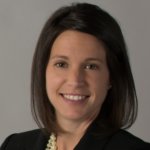With thousands of banks and credit unions pushing to implement the current expected credit loss, or CECL, accounting standard by the 2023 deadline, auditor and regulatory expectations are top of mind.
After all, external auditors and examiners will be asking questions soon enough about everything from segmentation to backtesting and monitoring, based on the supervisory and audit inquiries received by Abrigo’s public business entity clients already reporting results under CECL. Supervisory questions about CECL circulated in an examination preparation questionnaire to small depository institutions ahead of or during this year’s exam cycle show topic areas have centered on the source and length of forecasts, as well as qualitative adjustments, among other topics.
Internal controls, model development can benefit
Regulators, auditors, and other industry experts have repeatedly encouraged financial institutions since the CECL accounting standard was issued in 2016 to involve their auditors early on in the CECL adoption process. Doing so has several benefits, CECL experts during Abrigo’s 2022 ThinkBIG Conference reminded financial institution staff.

Ensley
The experts, who are auditors and CPAs from regional and national audit firms and Abrigo, said communicating throughout implementation can be helpful in areas such as internal controls, model development or selection, and model changes.
“I can’t stress enough how important it is to get your external auditor … involved in these discussions early on,” said Ashley Ensley, Partner at Dixon Hughes Goodman LLP. “Your auditor can’t make decisions with you or for you, but they can consult, and they can tell you what they have seen in other institutions that has worked well.”
“Don’t wait until the day you adopt [CECL] and then call your auditor and say here’s what we came up with,” she said.

Hammond
Ensley and the other CECL accounting experts at ThinkBIG shared a range of feedback from their work with 2023 adopters and institutions already reporting under the standard.
Their responses to several questions during a panel discussion shed light on the type of help they can provide as it relates to CECL implementation and CECL audit considerations.
Below are some of the questions and edited responses from the CECL accounting panel, which featured:
- Ashley Ensley, Partner, Dixon Hughes Goodman, LLP, now FORVIS, LLP
- Graham Dyer, Partner, Accounting Principles, Grant Thornton
- Anthony Porter, Senior Manager, Financial Services Group, Moss Adams
- Neekis Hammond, Managing Director, Abrigo Advisory Services








